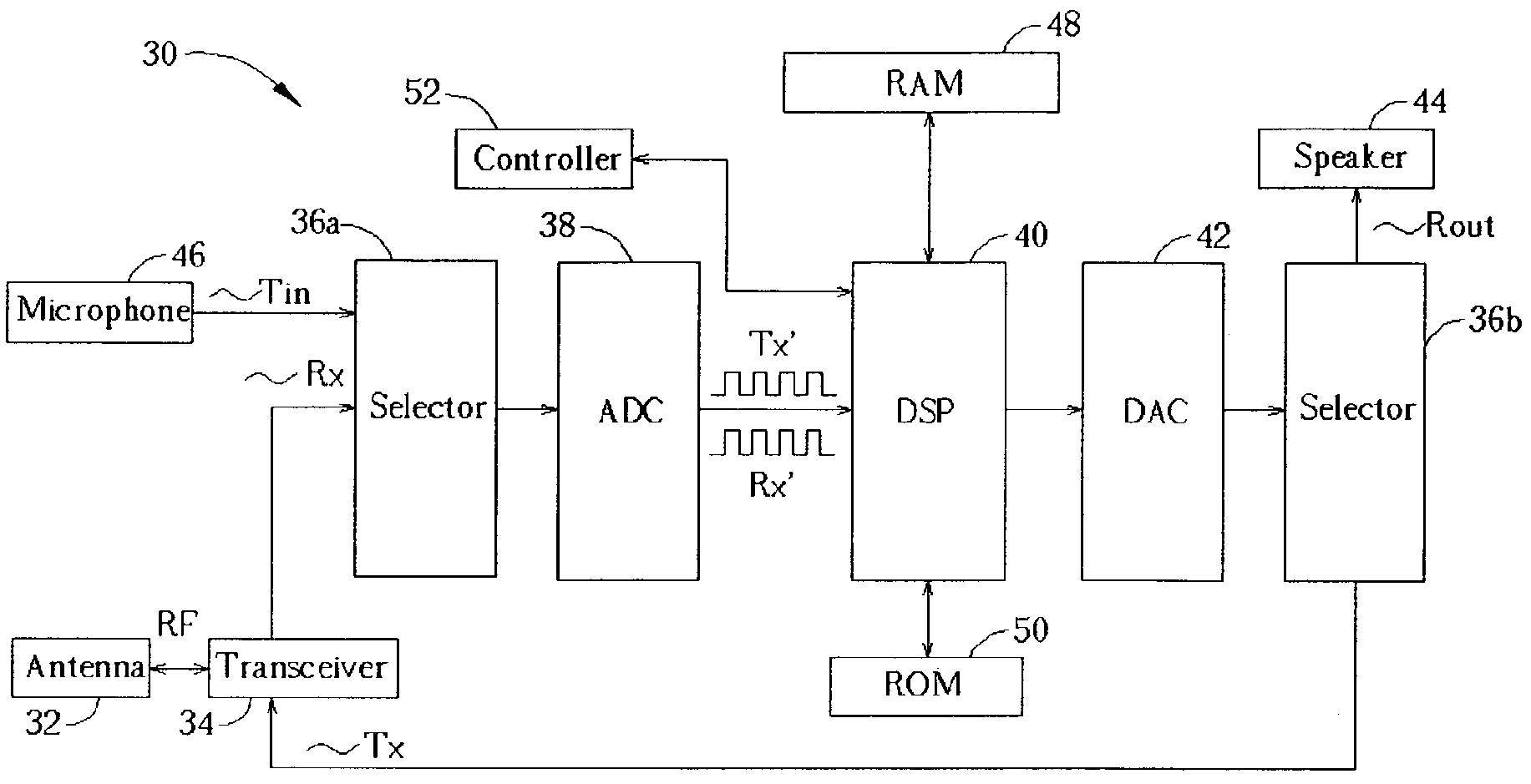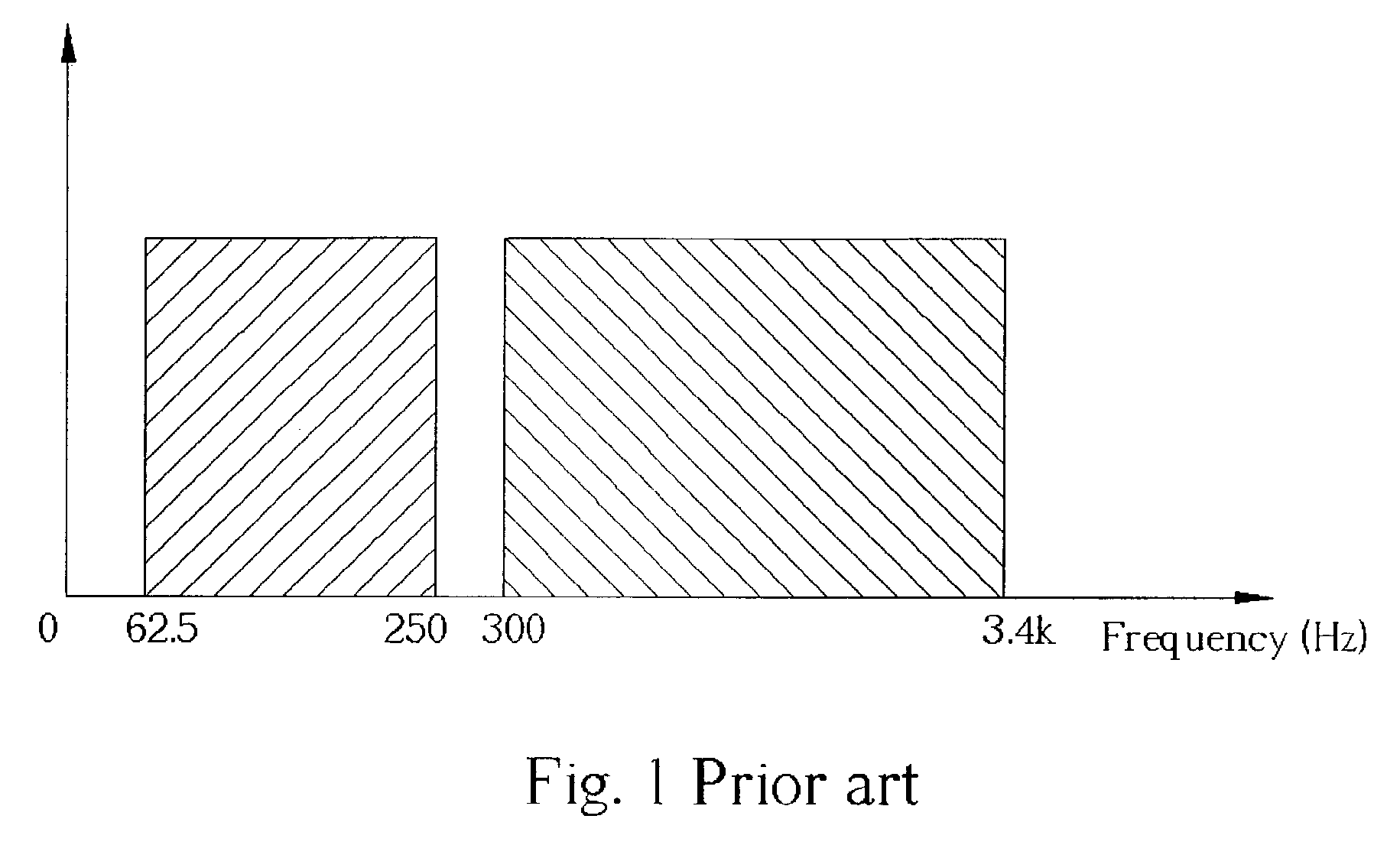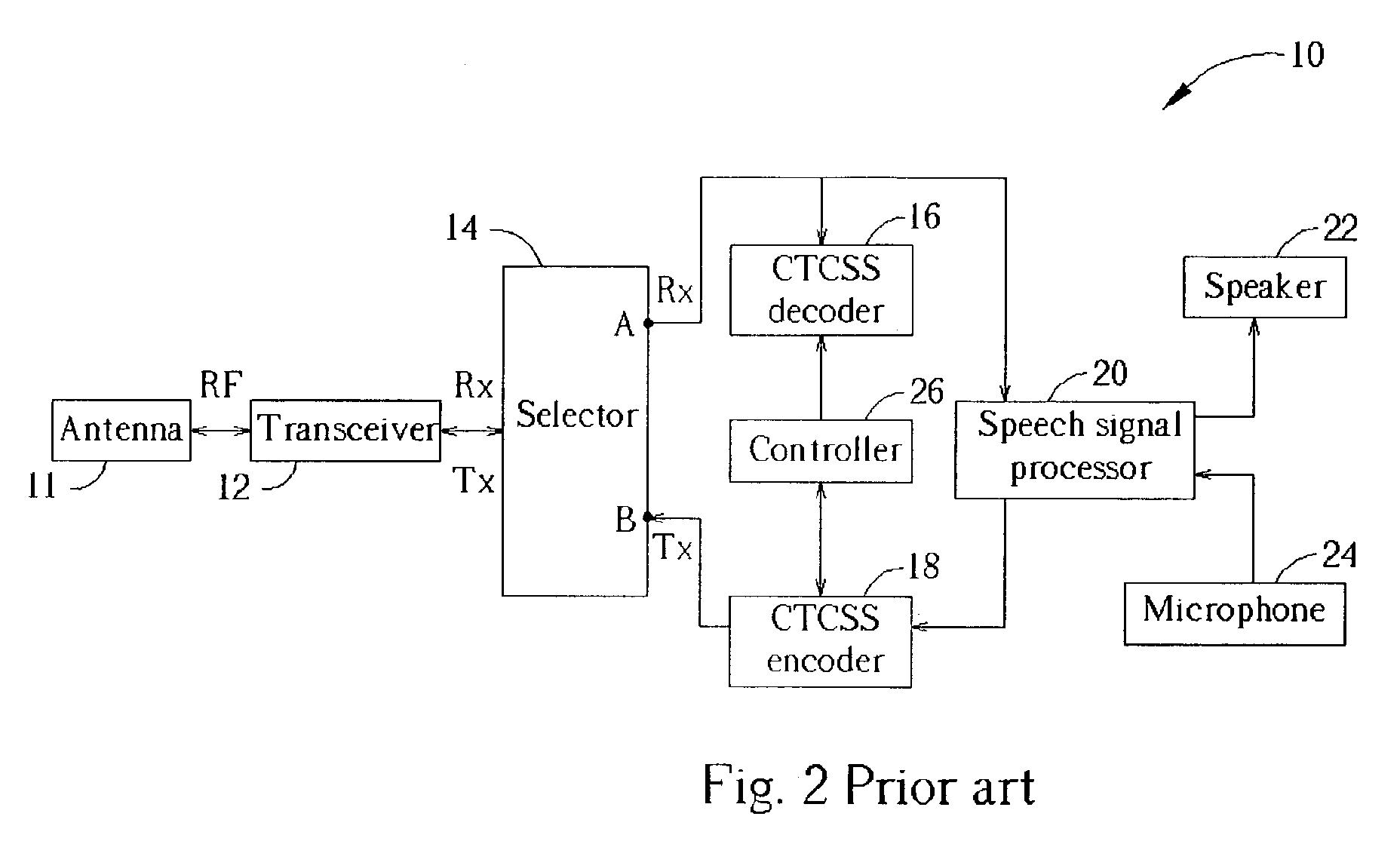Signal processing method for a walkie-talkie device
- Summary
- Abstract
- Description
- Claims
- Application Information
AI Technical Summary
Benefits of technology
Problems solved by technology
Method used
Image
Examples
Embodiment Construction
[0016]Please refer to FIG. 3, which is a block diagram of a walkie-talkie device 30 according to the present invention. The walkie-talkie device 30 has an antenna 32, a transceiver 34, two selectors 36a, 36b, an analog-to-digital converter (ADC) 38, a digital signal processor (DSP) 40, a digital-to-analog converter (DAC) 42, a speaker 44, a microphone 46, a random access memory (RAM) 48, a read-only memory (ROM) 50, and a controller 52. The antenna 32 is used to receive RF signals transmitted via a specific physical channel, and is used to output RF signals through the specific physical channel. The transceiver 34 is capable of converting the received high-frequency RF signals into low-frequency baseband signals Rx. In addition, the transceiver 34 is capable of converting the low-frequency signals Tx into high-frequency RF signals, and the converted RF signals are then outputted from the antenna 32. The selectors 36a, 36b are used to dominate transmission paths according to current ...
PUM
 Login to View More
Login to View More Abstract
Description
Claims
Application Information
 Login to View More
Login to View More - R&D
- Intellectual Property
- Life Sciences
- Materials
- Tech Scout
- Unparalleled Data Quality
- Higher Quality Content
- 60% Fewer Hallucinations
Browse by: Latest US Patents, China's latest patents, Technical Efficacy Thesaurus, Application Domain, Technology Topic, Popular Technical Reports.
© 2025 PatSnap. All rights reserved.Legal|Privacy policy|Modern Slavery Act Transparency Statement|Sitemap|About US| Contact US: help@patsnap.com



